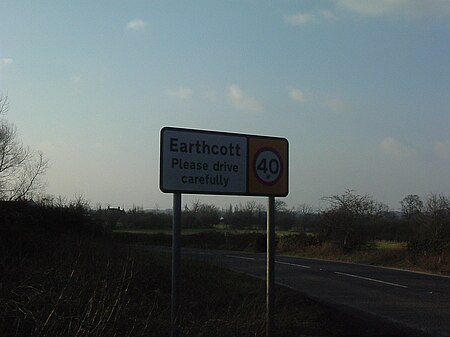Earthcott

Earthcott is a hamlet in the civil parish of Alveston in South Gloucestershire, England, between Latteridge and Rudgeway on the B4059 road between the A38 road and Yate. It has a letter box and a small village green, but no other services. Its main industry is farming. The place-name 'Earthcott' is first attested in the Domesday Book of 1086, where it appears as 'Herdicote'. It derives from the Old English 'eorthe-cot' meaning 'earth hut' ('cot' as in the modern English words 'dovecote' and 'cottage').Traditions of Earthcott include a village bonfire night, and Christmas Eve carol singing, normally done on the back of a tractor-trailer, with regular stops for mince pies and hot toddy. Earthcott should not be confused with the nearby hamlet of Gaunt's Earthcott. There is a small 1870 Wesleyan Chapel now converted into a house. Last service 1969.
Excerpt from the Wikipedia article Earthcott (License: CC BY-SA 3.0, Authors, Images).Earthcott
B4427,
Geographical coordinates (GPS) Address Nearby Places Show on map
Geographical coordinates (GPS)
| Latitude | Longitude |
|---|---|
| N 51.569722222222 ° | E -2.5075 ° |
Address
B4427
BS35 3TD , Alveston
England, United Kingdom
Open on Google Maps









